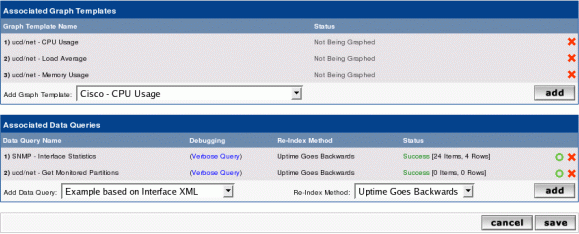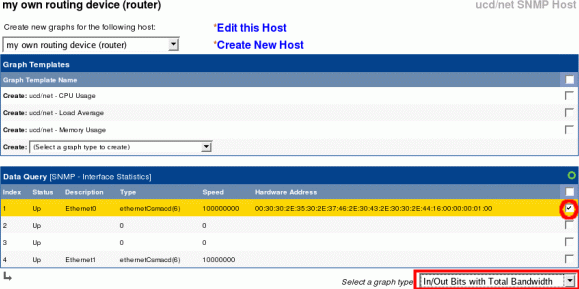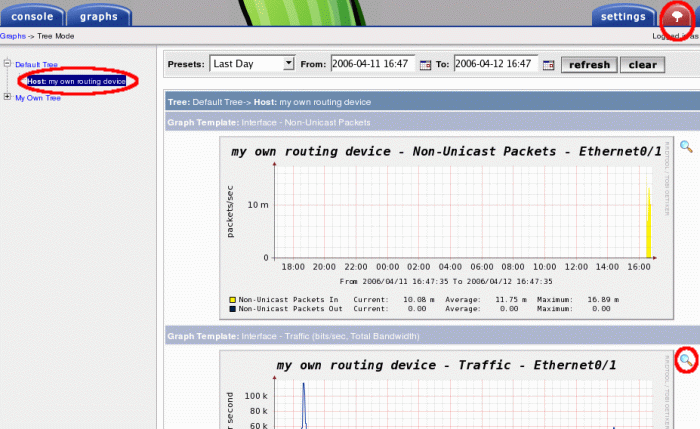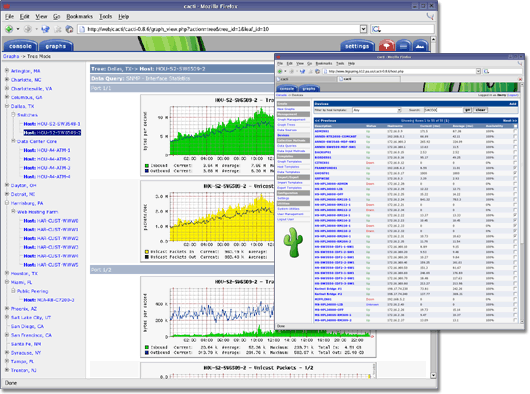安装注意
作为服务器,不安装不需要的组件,所以在选择组件的时候,不要安装服务包和桌面但需要开发工具和开发包。
以下命令等适用redhat/centos 4,5
1.删除系统特殊的的用户帐号:
禁止所有默认的被操作系统本身启动的且不需要的帐号,当你第一次装上系统时就应该做此检查,Linux提供了各种帐号,你可能不需要,如果你不需要这个帐号,就移走它,你有的帐号越多,就越容易受到攻击。
======================================================================
#为删除你系统上的用户,用下面的命令:
[root@c1gstudio]# userdel username
#批量删除方式
#这里删除”adm lp sync shutdown halt mail news uucp operator games gopher ftp “账号
#如果你开着ftp等服务可以把ftp账号保留下来。
for i in adm lp sync shutdown halt mail news uucp ope
rator games gopher ftp ;do userdel $i ;done
======================================================================
2.删除系统特殊的组帐号
[root@c1gstudio]# groupdel groupname
#批量删除方式
for i in adm lp mail news uucp games dip pppusers pop
users slipusers ;do groupdel $i ;done
======================================================================
3.用户密码设置
安装linux时默认的密码最小长度是5个字节,但这并不够,要把它设为8个字节。修改最短密码长度需要编辑login.defs文件#vi /etc/login.defs
PASS_MAX_DAYS 99999 ##密码设置最长有效期(默认值)
PASS_MIN_DAYS 0 ##密码设置最短有效期
PASS_MIN_LEN 5 ##设置密码最小长度,将5改为8
PASS_WARN_AGE 7 ##提前多少天警告用户密码即将过期。
然后修改Root密码
#passwd root
New UNIX password:
Retype new UNIX password:
passwd: all authentication tokens updated successfully.
======================================================================
4.修改自动注销帐号时间
自动注销帐号的登录,在Linux系统中root账户是具有最高特权的。如果系统管理员在离开系统之前忘记注销root账户,那将会带来很大的安全隐患,应该让系统会自动注销。通过修改账户中“TMOUT”参数,可以实现此功能。TMOUT按秒计算。编辑你的profile文件(vi /etc/profile),在”HISTSIZE=”后面加入下面这行:
TMOUT=300
300,表示300秒,也就是表示5分钟。这样,如果系统中登陆的用户在5分钟内都没有动作,那么系统会自动注销这个账户。
======================================================================
5.限制Shell命令记录大小
默认情况下,bash shell会在文件$HOME/.bash_history中存放多达500条命令记录(根据具体的系统不同,默认记录条数不同)。系统中每个用户的主目录下都有一个这样的文件。在此笔者强烈建议限制该文件的大小。
您可以编辑/etc/profile文件,修改其中的选项如下: HISTFILESIZE=30或HISTSIZE=30
#vi /etc/profile
HISTSIZE=30
======================================================================
6.注销时删除命令记录
编辑/etc/skel/.bash_logout文件,增加如下行:
rm -f $HOME/.bash_history
这样,系统中的所有用户在注销时都会删除其命令记录。
如果只需要针对某个特定用户,如root用户进行设置,则可只在该用户的主目录下修改/$HOME/.bash_history文件,增加相同的一行即可。
======================================================================
7.用下面的命令加需要的用户组和用户帐号
[root@c1gstudio]# groupadd
例如:增加website 用户组,groupadd website
然后调用vigr命令查看已添加的用户组
用下面的命令加需要的用户帐号
[root@c1gstudio]# useradd username –g website //添加用户到website组(作为webserver的普通管理员,而非root管理员)
然后调用vipw命令查看已添加的用户
用下面的命令改变用户口令(至少输入8位字母和数字组合的密码,并将密码记录于本地机的专门文档中,以防遗忘)
[root@c1gstudio]# passwd username
======================================================================
8.阻止任何人su作为root
如果你不想任何人能够su作为root,你能编辑/etc/pam.d/su加下面的行:
#vi /etc/pam.d/su
auth sufficient /lib/security/$ISA/pam_rootok.so debug
auth required /lib/security/$ISA/pam_wheel.so group=website
意味着仅仅website组的用户可以su作为root.
======================================================================
9.修改ssh服务的root登录权限
修改ssh服务配置文件,使的ssh服务不允许直接使用root用户来登录,这样减少系统被恶意登录攻击的机会。
#vi /etc/ssh/sshd_config
PermitRootLogin yes
将这行前的#去掉后,修改为:
PermitRootLogin no
10.修改ssh服务的sshd 端口
ssh默认会监听在22端口,你可以修改至6022端口以避过常规的扫描。
注意:修改端口错误可能会导致你下次连不到服务器,可以先同时开着22和6022两个端口,然后再关掉22端口;
重启sshd不会弹掉你当前的连接,可以另外开一个客户端来测试服务;
#vi /etc/ssh/sshd_config
#增加修改
#Port 22 #关闭22端口
Port 6022 #增加6022端口
#重启sshd服务
service sshd restart
检查一下sshd的监听端口对不对
netstat -lnp|grep ssh
#iptables开放sshd的6022端口
vi /etc/sysconfig/iptables
#如果使用redhat默认规则则增加
-A RH-Firewall-1-INPUT -m state –state NEW -m tcp -p tcp –dport 6022 -j ACCEPT
#或
iptables -A INPUT -p tcp –dport 6022 -j ACCEPT
iptables -A OUTPUT -p udp –sport 6022 -j ACCEPT
重启iptables 服务
service iptables restart
#测试两个端口是否都能连上,连上后再将22端口删除
详细参考:
Linux操作系统下SSH默认22端口修改方法
======================================================================
11.关闭系统不使用的服务:
cd /etc/init.d #进入到系统init进程启动目录
在这里有两个方法,可以关闭init目录下的服务,
一、将init目录下的文件名mv成*.old类的文件名,即修改文件名,作用就是在系统启动的时候找不到这个服务的启动文件。二、使用chkconfig系统命令来关闭系统启动等级的服务。
注:在使用以下任何一种方法时,请先检查需要关闭的服务是否是本服务器特别需要启动支持的服务,以防关闭正常使用的服务。
使用chkcofig命令来关闭不使用的系统服务 (level前面为2个减号)
要想在修改启动脚本前了解有多少服务正在运行,输入:
ps aux | wc -l
然后修改启动脚本后,重启系统,再次输入上面的命令,就可计算出减少了多少项服务。越少服务在运行,安全性就越好。另外运行以下命令可以了解还有多少服务在运行:
netstat -na –ip
批量方式
先停止服务
for i in acpid anacron apmd atd auditd autofs avahi-daemon avahi-dnsconfd bluetooth cpuspeed cups dhcpd firstboot gpm haldaemon hidd ip6tables ipsec isdn kudzu lpd mcstrans messagebus microcode_ctl netfs nfs nfslock nscd pcscd portmap readahead_early restorecond rpcgssd rpcidmapd rstatd sendmai
l setroubleshoot snmpd sysstat xfs xinetd yppasswdd ypserv yum-updatesd ;do service $i stop;done
关闭启动服务
for i in acpid anacron apmd atd auditd autofs avahi-daemon avahi-dnsconfd bluetooth cpuspeed cups dhcpd firstboot gpm haldaemon hidd ip6tables ipsec isdn kudzu lpd mcstrans messagebus microcode_ctl netfs nfs nfslock nscd pcscd portmap readahead_early restorecond rpcgssd rpcidmapd rstatd sendmai
l setroubleshoot snmpd sysstat xfs xinetd yppasswdd ypserv yum-updatesd ;do chkconfig $i off;done
以下为手动方式及解释,执行批量方式后不需再执行了
chkconfig –level 345 apmd off ##笔记本需要
chkconfig –level 345 netfs off ## nfs客户端
chkconfig –level 345 yppasswdd off ## NIS服务器,此服务漏洞很多
chkconfig –level 345 ypserv off ## NIS服务器,此服务漏洞很多
chkconfig –level 345 dhcpd off ## dhcp服务
chkconfig –level 345 portmap off ##运行rpc(111端口)服务必需
chkconfig –level 345 lpd off ##打印服务
chkconfig –level 345 nfs off ## NFS服务器,漏洞极多
chkconfig –level 345 sendmail off ##邮件服务, 漏洞极多
chkconfig –level 345 snmpd off ## SNMP,远程用户能从中获得许多系统信息
chkconfig –level 345 rstatd off ##避免运行r服务,远程用户可以从中获取很多信息
chkconfig –level 345 atd off ##和cron很相似的定时运行程序的服务
注:以上chkcofig 命令中的3和5是系统启动的类型,以下为数字代表意思
0:开机(请不要切换到此等级)
1:单人使用者模式的文字界面
2:多人使用者模式的文字界面,不具有网络档案系统(NFS)功能
3:多人使用者模式的文字界面,具有网络档案系统(NFS)功能
4:某些发行版的linux使用此等级进入x windows system
5:某些发行版的linux使用此等级进入x windows system
6:重新启动
如果不指定–level 单用on和off开关,系统默认只对运行级3,4,5有效
chkconfig cups off #打印机
chkconfig bluetooth off # 蓝牙
chkconfig hidd off # 蓝牙
chkconfig ip6tables off # ipv6
chkconfig ipsec off # vpn
chkconfig auditd off #用户空间监控程序
chkconfig autofs off #光盘软盘硬盘等自动加载服务
chkconfig avahi-daemon off #主要用于Zero Configuration Networking ,一般没什么用建议关闭
chkconfig avahi-dnsconfd off #主要用于Zero Configuration Networking ,同上,建议关闭
chkconfig cpuspeed off #动态调整CPU频率的进程,在服务器系统中这个进程建议关闭
chkconfig isdn off #isdn
chkconfig kudzu off #硬件自动监测服务
chkconfig nfslock off #NFS文档锁定功能。文档共享支持,无需的能够关了
chkconfig nscd off #负责密码和组的查询,在有NIS服务时需要
chkconfig pcscd off #智能卡支持,,如果没有可以关了
chkconfig yum-updatesd off #yum更新
chkconfig acpid off
chkconfig autofs off
chkconfig firstboot off
chkconfig mcstrans off #selinux
chkconfig microcode_ctl off
chkconfig rpcgssd off
chkconfig rpcidmapd off
chkconfig setroubleshoot off
chkconfig xfs off
chkconfig xinetd off
chkconfig messagebus off
chkconfig gpm off #鼠标
chkconfig restorecond off #selinux
chkconfig haldaemon off
chkconfig sysstat off
chkconfig readahead_early off
chkconfig anacron off
需要保留的服务
crond , irqbalance , microcode_ctl ,network , sshd ,syslog
因为有些服务已运行,所以设置完后需重启
chkconfig
/*
语 法:chkconfig [–add][–del][–list][系统服务] 或 chkconfig [–level <等级代号>][系统服务][on/off/reset]
补充说明:这是Red Hat公司遵循GPL规则所开发的程序,它可查询操作系统在每一个执行等级中会执行哪些系统服务,其中包括各类常驻服务。
参 数:
–add 增加所指定的系统服务,让chkconfig指令得以管理它,并同时在系统启动的叙述文件内增加相关数据。
–del 删除所指定的系统服务,不再由chkconfig指令管理,并同时在系统启动的叙述文件内删除相关数据。
–level<等级代号> 指定读系统服务要在哪一个执行等级中开启或关毕
*/
======================================================================
12.阻止系统响应任何从外部/内部来的ping请求
既然没有人能ping通你的机器并收到响应,你可以大大增强你的站点的安全性。你可以加下面的一行命令到/etc/rc.d/rc.local,以使每次启动后自动运行。
echo 1 > /proc/sys/net/ipv4/icmp_echo_ignore_all
#这个可以不做哈
======================================================================
12.修改“/etc/host.conf”文件
“/etc/host.conf”说明了如何解析地址。编辑“/etc/host.conf”文件(vi /etc/host.conf),加入下面这行:
# Lookup names via DNS first then fall back to /etc/hosts.
order hosts,bind
# We have machines with multiple IP addresses.
multi on
# Check for IP address spoofing.
nospoof on
第一项设置首先通过DNS解析IP地址,然后通过hosts文件解析。第二项设置检测是否“/etc/hosts”文件中的主机是否拥有多个IP地址(比如有多个以太口网卡)。第三项设置说明要注意对本机未经许可的电子欺骗。
======================================================================
13.不允许从不同的控制台进行root登陆
”/etc/securetty”文件允许你定义root用户可以从那个TTY设备登陆。你可以编辑”/etc/securetty”文件,再不需要登陆的TTY设备前添加“#”标志,来禁止从该TTY设备进行root登陆。
在/etc/inittab文件中有如下一段话:
# Run gettys in standard runlevels
1:2345:respawn:/sbin/mingetty tty1
2:2345:respawn:/sbin/mingetty tty2
#3:2345:respawn:/sbin/mingetty tty3
#4:2345:respawn:/sbin/mingetty tty4
#5:2345:respawn:/sbin/mingetty tty5
#6:2345:respawn:/sbin/mingetty tty6
系统默认的可以使用6个控制台,即Alt+F1,Alt+F2…,这里在3,4,5,6前面加上“#”,注释该句话,这样现在只有两个控制台可供使用,最好保留两个。然后重新启动init进程,改动即可生效!
======================================================================
15.禁止Control-Alt-Delete键盘关闭命令
在”/etc/inittab” 文件中注释掉下面这行(使用#):
ca::ctrlaltdel:/sbin/shutdown -t3 -r now
改为:
#ca::ctrlaltdel:/sbin/shutdown -t3 -r now
为了使这项改动起作用,输入下面这个命令:
# /sbin/init q
======================================================================
16.用chattr命令给下面的文件加上不可更改属性。
[root@c1gstudio]# chattr +i /etc/passwd
[root@c1gstudio]# chattr +i /etc/shadow
[root@c1gstudio]# chattr +i /etc/group
[root@c1gstudio]# chattr +i /etc/gshadow
【注:chattr是改变文件属性的命令,参数i代表不得任意更动文件或目录,此处的i为不可修改位(immutable)。查看方法:lsattr /etc/passwd,撤销为chattr –i /etc/group】
补充说明:这项指令可改变存放在ext2文件系统上的文件或目录属性,这些属性共有以下8种模式:
a:让文件或目录仅供附加用途。
b:不更新文件或目录的最后存取时间。
c:将文件或目录压缩后存放。
d:将文件或目录排除在倾倒操作之外。
i:不得任意更动文件或目录。
s:保密性删除文件或目录。
S:即时更新文件或目录。
u:预防以外删除。
参 数:
-R 递归处理,将指定目录下的所有文件及子目录一并处理。
-v<版本编号> 设置文件或目录版本。
-V 显示指令执行过程。
+<属性> 开启文件或目录的该项属性。
-<属性> 关闭文件或目录的该项属性。
=<属性> 指定文件或目录的该项属性。
======================================================================
17.给系统服务端口列表文件加锁
主要作用:防止未经许可的删除或添加服务
chattr +i /etc/services
【查看方法:lsattr /etc/ services,撤销为chattr –i /etc/ services】
======================================================================
17.系统文件权限修改
Linux文件系统的安全主要是通过设置文件的权限来实现的。每一个Linux的文件或目录,都有3组属性,分别定义文件或目录的所有者,用户组和其他人的使用权限(只读、可写、可执行、允许SUID、允许SGID等)。特别注意,权限为SUID和SGID的可执行文件,在程序运行过程中,会给进程赋予所有者的权限,如果被黑客发现并利用就会给系统造成危害。
(1)修改init目录文件执行权限:
chmod -R 700 /etc/init.d/* (递归处理,owner具有rwx,group无,others无)
(2)修改部分系统文件的SUID和SGID的权限:
chmod a-s /usr/bin/chage
chmod a-s /usr/bin/gpasswd
chmod a-s /usr/bin/wall
chmod a-s /usr/bin/chfn
chmod a-s /usr/bin/chsh
chmod a-s /usr/bin/newgrp
chmod a-s /usr/bin/write
chmod a-s /usr/sbin/usernetctl
chmod a-s /usr/sbin/traceroute
chmod a-s /bin/mount
chmod a-s /bin/umount
chmod a-s /sbin/netreport
(3)修改系统引导文件
chmod 600 /etc/grub.conf
chattr +i /etc/grub.conf
【查看方法:lsattr /etc/grub.conf,撤销为chattr –i /etc/grub.conf】
======================================================================
18.增加dns
#vi /etc/resolv.conf
nameserver 8.8.8.8 #google dns
nameserver 8.8.4.4
======================================================================
19.hostname 修改
#注意需先把mysql、postfix等服务停了
1.hostname servername
2.vi /etc/sysconfig/network
service network restart
3.vi /etc/hosts
======================================================================
20.selinux 修改
开启selinux可以增加安全性,但装软件时可能会遇到一些奇怪问题
以下是关闭方法
#vi /etc/selinux/config
改成disabled
======================================================================
21.关闭ipv6
echo “alias net-pf-10 off” >> /etc/modprobe.conf
echo “alias ipv6 off” >> /etc/modprobe.conf
#vi /etc/sysconfig/network
NETWORKING_IPV6=no
重启服务
Service ip6tables stop
Service network restart
关闭自动启动
chkconfig –level 235 ip6tables off
======================================================================
22.设置iptables
iptables 默认安全规则脚本
======================================================================
重启系统
以上大部分设置可以运行脚本来完成
linux安全设置快捷脚本
设置完成后重启系统
其它设置项
linux调整系统时区/时间的方法
把/usr/share/zoneinfo里相应的时区与/etc/localtime做个软link.比如使用上海时区的时间:ln -s /usr/share/zoneinfo/Asia/Shanghai /etc/localtime 如果要使用UTC计时方式,则应在/etc/sysconfig/clock文件里改UTC=TRUE 时间的设置: 使用date 命令加s参数修改,注意linux的时间格式为”月日时分年”,也可以只修改时间date -s 22:30:20,如果修改的是年月日和时间,格式为”月日时分年.秒”,2007-03-18 11:01:56则应写为”date -s 031811012007.56 硬件时间与当前时间更新: hwclock –systohc 如果硬件记时用UTC,则为 hwclock –systohc –utc
linux调整系统时区/时间的方法
1) 找到相应的时区文件 /usr/share/zoneinfo/Asia/Shanghai
用这个文件替换当前的/etc/localtime文件。
步骤: cp –i /usr/share/zoneinfo/Asia/Shanghai /etc/localtime
选择覆盖
2) 修改/etc/sysconfig/clock文件,修改为:
ZONE=”Asia/Shanghai”
UTC=false
ARC=false
3)
时间设定成2005年8月30日的命令如下:
#date -s 08/30/2005
将系统时间设定成下午6点40分0秒的命令如下。
#date -s 18:40:00
4)
同步BIOS时钟,强制把系统时间写入CMOS,命令如下:
#clock -w
======================================================================
增加网易yum源
#cd /etc/yum.repos.d/
#mv CentOS-Base.repo CentOS-Base.repo.bak
#wget http://mirrors.163.com/.help/CentOS-Base-163.repo
======================================================================
安装ntpd
#yum install ntp
#chkconfig –levels 235 ntpd on
#ntpdate ntp.api.bz #先手动校准下
#service ntpd start
======================================================================
设置语言
英文语言,中文支持
#vi /etc/sysconfig/i18n
LANG=”en_US.UTF-8″
SUPPORTED=”zh_CN.UTF-8:zh_CN:zh”
SYSFONT=”latarcyrheb-sun16″
======================================================================
tmpwatch 定时清除
假设服务器自定义了php的session和upload目录
#vi /etc/cron.daily/tmpwatch
在240 /tmp 前增加
-x /tmp/session -x /tmp/upload
#mkdir /tmp/session
#mkdir /tmp/upload
#chown nobody:nobody /tmp/upload
#chmod 0770 /tmp/upload
======================================================================
安装fail2ban
使用fail2ban来阻止Ssh暴力入侵
======================================================================
安装Tripwire
安装Tripwire检查文件完整性
======================================================================
安装jailkit
用jailkit创建一个chroot环境的sftp











近期评论